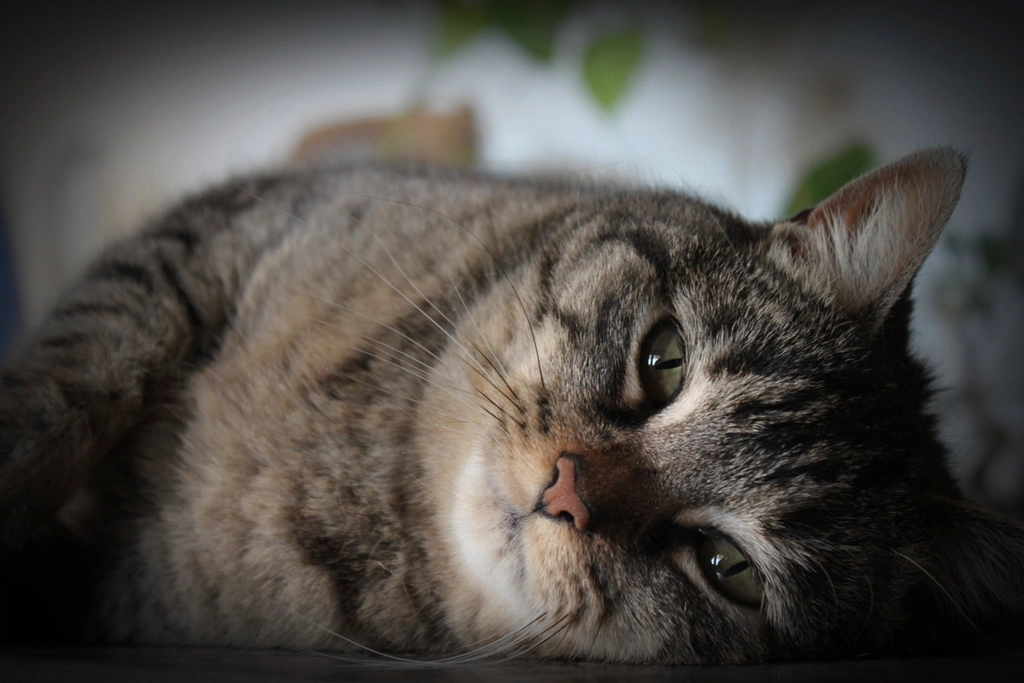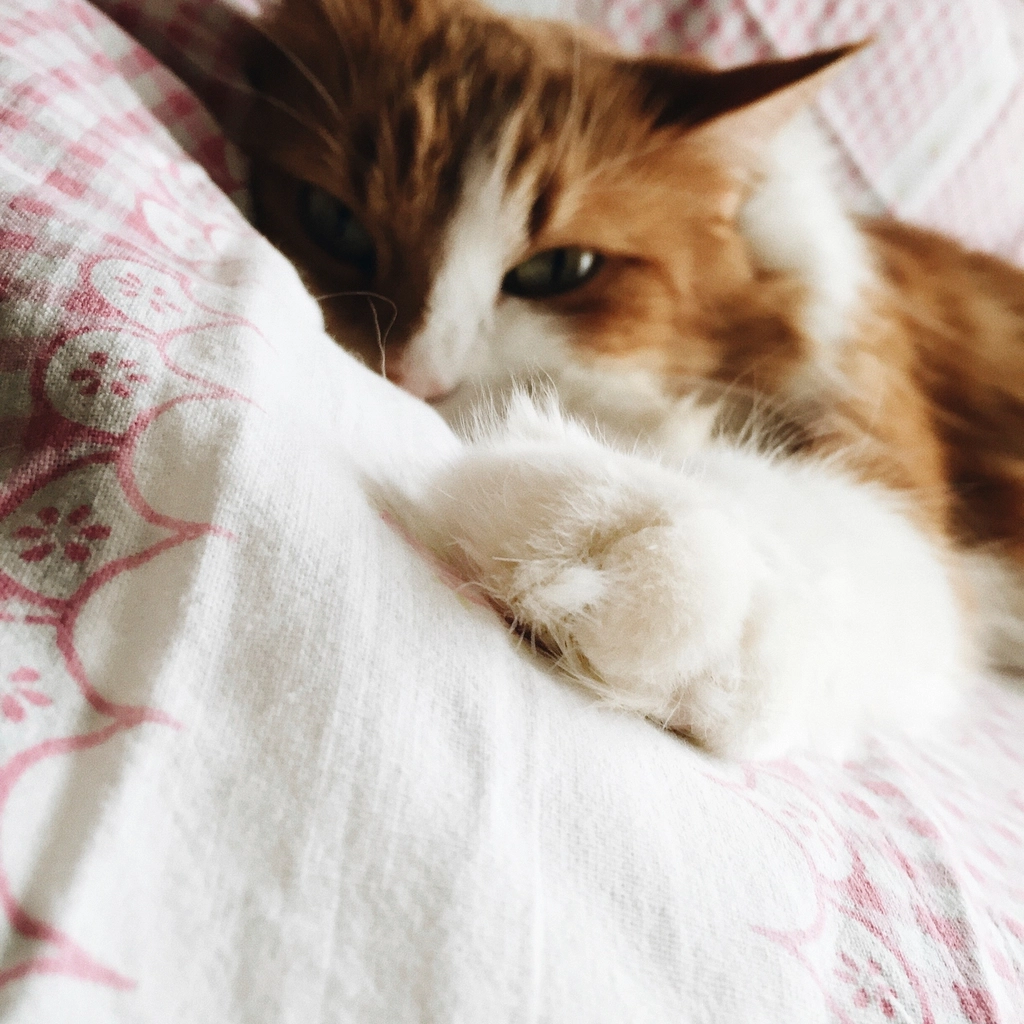Have you ever woken up in the morning and found your cat curled up like a warm, furry loaf right at the foot of your bed? If you have, you’re not alone—and you’re probably smiling at the thought. This quirky feline habit is more than just adorable; it’s packed with meaning. For centuries, people have wondered why their cats choose this particular spot. Is it love, instinct, or something in between? Let’s step into your cat’s paws and decode this mysterious bedtime ritual.
A Sign of Trust and Affection

Cats are notorious for being independent, sometimes even aloof. But when your cat chooses to sleep at the foot of your bed, it’s a loud and clear message: they trust you. In the wild, cats are vulnerable when they sleep, so choosing to rest near you means they feel safe. It’s their way of saying, “I feel protected here.” This small act is a huge compliment in the cat world. Some owners even say it’s the closest thing to a feline “I love you.” If your cat cozies up near your feet, you can be sure you’ve earned their respect—and their heart.
Seeking Warmth and Comfort

Cats are little heat-seeking missiles. The foot of the bed is often one of the warmest spots in the room, especially when your feet create a pocket of warmth under the covers. Your cat is simply taking advantage of this cozy nook. It’s not just about staying toasty, though. The soft bedding and the gentle movement of your feet can be soothing, almost like a lullaby for your feline friend. Sometimes, it might even remind them of snuggling with their mother or littermates as kittens, making the foot of your bed a comforting haven.
Instinctual Protective Behavior

Believe it or not, your cat might be looking out for you. In their wild ancestry, cats would often sleep in spots that allowed them to guard their families or colony members. By positioning themselves at the foot of the bed, your cat can keep an eye on the door and react quickly if there’s any disturbance. It’s almost like having a furry little bouncer who’s always on duty. This spot gives them a clear vantage point while still being close to you, blending their natural instincts with their love for their human.
Personal Space and Boundaries

Let’s face it—cats like their space. While they enjoy being near you, they might not want to be right up in your face all night. The foot of the bed strikes the perfect balance. It allows them proximity without being too close for comfort. Some cats are sensitive to movement or noise, and staying at your feet helps them avoid your tossing and turning. It’s their polite way of saying, “I want to be near you, but I also need my bubble.”
Territory Marking

Cats are territorial creatures, and your bed is a prime piece of real estate. By sleeping at the foot of your bed, your cat is claiming this space as theirs. They leave their scent behind, subtly marking their territory and reinforcing their bond with you. This isn’t about dominance; it’s more about belonging. Your bed becomes a shared territory, a little piece of the world that’s “yours and mine.”
Routine and Habit

Cats are creatures of habit. Once they find a spot they like, they stick with it. If your cat has started sleeping at the foot of your bed, it’s likely become part of their nightly routine. This consistency gives them a sense of security and predictability. Just like you might have a favorite side of the bed, your cat has their favorite spot, and the foot of the bed just happens to tick all their boxes.
Temperature Regulation

Ever notice how your cat moves around the bed as the night goes on? The foot of the bed gives them options. It’s usually cooler than up by your head, so if your cat gets too warm, they can stretch out or move away a bit. Conversely, if they get chilly, they can burrow closer. This spot lets them regulate their temperature with ease, which is especially important for older cats or those with thicker fur.
Monitoring Their Human

Cats might seem indifferent, but they’re always watching. Sleeping at the foot of the bed lets them keep an eye on you without being disturbed. It’s their way of checking in, making sure you’re safe and sound. Some cat owners notice their felines looking up whenever they shift or wake up during the night. It’s a subtle reminder that your cat is always tuned into your presence, even while they snooze.
Preference for Softness

Think about it—your mattress is probably the softest thing in your home. The foot of the bed usually has fewer pillows and less clutter, giving your cat a plush, unobstructed spot to stretch out. Some cats even knead the blankets before curling up, turning the area into a cozy nest. This simple pleasure—a soft, quiet spot—is sometimes all a cat wants.
Distance from Disturbance

If you tend to toss and turn, or if you have a partner who snores, the foot of the bed is a safe haven for your cat. It’s far enough away from your movements and noise, while still being close to you. This distance provides a perfect balance of companionship and peace, allowing your cat to rest undisturbed.
Observing Their Environment

Cats are naturally curious. The foot of the bed often gives them a better view of the room, the doorway, and sometimes even a window. From this perch, they can watch for other pets, check out what’s happening in the hallway, or just keep tabs on any late-night activity. This sense of vigilance makes your cat feel more secure, satisfying their need to be in control of their environment.
Bonding With Their Human

Sleeping near you is one of the most direct ways your cat can bond with you. For some cats, being at the foot of the bed is a nightly ritual that strengthens your connection. You might notice your cat kneading or purring as they settle in, little signs that they’re happy and content. This shared space at bedtime becomes a quiet moment of togetherness, building trust and affection night after night.
Response to Your Movements

Some cats are highly sensitive to your movements and breathing. The foot of the bed is less likely to be disturbed if you roll over or adjust your pillow. This spot helps your cat avoid sudden jolts or changes, letting them enjoy a more restful sleep. It’s a smart choice—almost like picking the window seat on a calm bus ride instead of the bumpy middle.
A Place to Retreat Quickly

Cats are always thinking about their escape routes. The foot of the bed is closest to the edge and the door, making it easy for your cat to hop off if they sense something unusual. This quick access gives them peace of mind, especially in homes with other pets or kids. It’s a strategic spot that lets them relax without letting their guard down completely.
Adapting to Multi-Pet Households

If you have more than one pet, your cat’s choice of sleeping spot can be influenced by the household dynamic. The foot of the bed may be a compromise, allowing your cat to be close to you without having to share space with another animal. It’s a way for them to establish their place in the pecking order while still being part of the family cuddle.
Responding to Your Emotions

Cats are surprisingly in tune with your feelings. If you’ve had a tough day or you’re feeling under the weather, your cat might choose the foot of your bed to keep a gentle watch over you. It’s their way of offering comfort and companionship without overwhelming you. This quiet presence can be deeply soothing, like a silent promise that you’re not alone.
Following Their Own Rhythm

Sometimes, the answer is simple: your cat just likes the foot of the bed. Every cat has their quirks and preferences, and this spot fits their rhythm. Whether it’s the routine, the comfort, or just a personal whim, your cat’s choice is uniquely their own. Cats are individuals, after all, and their sleeping habits are as varied as their personalities.

Linnea is a born and bred Swede but spends as much time as possible in Cape Town, South Africa. This is mainly due to Cape Town’s extraordinary scenery, wildlife, and atmosphere (in other words, because Cape Town is heaven on earth.) That being said, Sweden’s majestic forests forever hold a special place in her heart. Linnea spends as much time as she can close to the ocean collecting sea shells or in the park admiring puppies.






